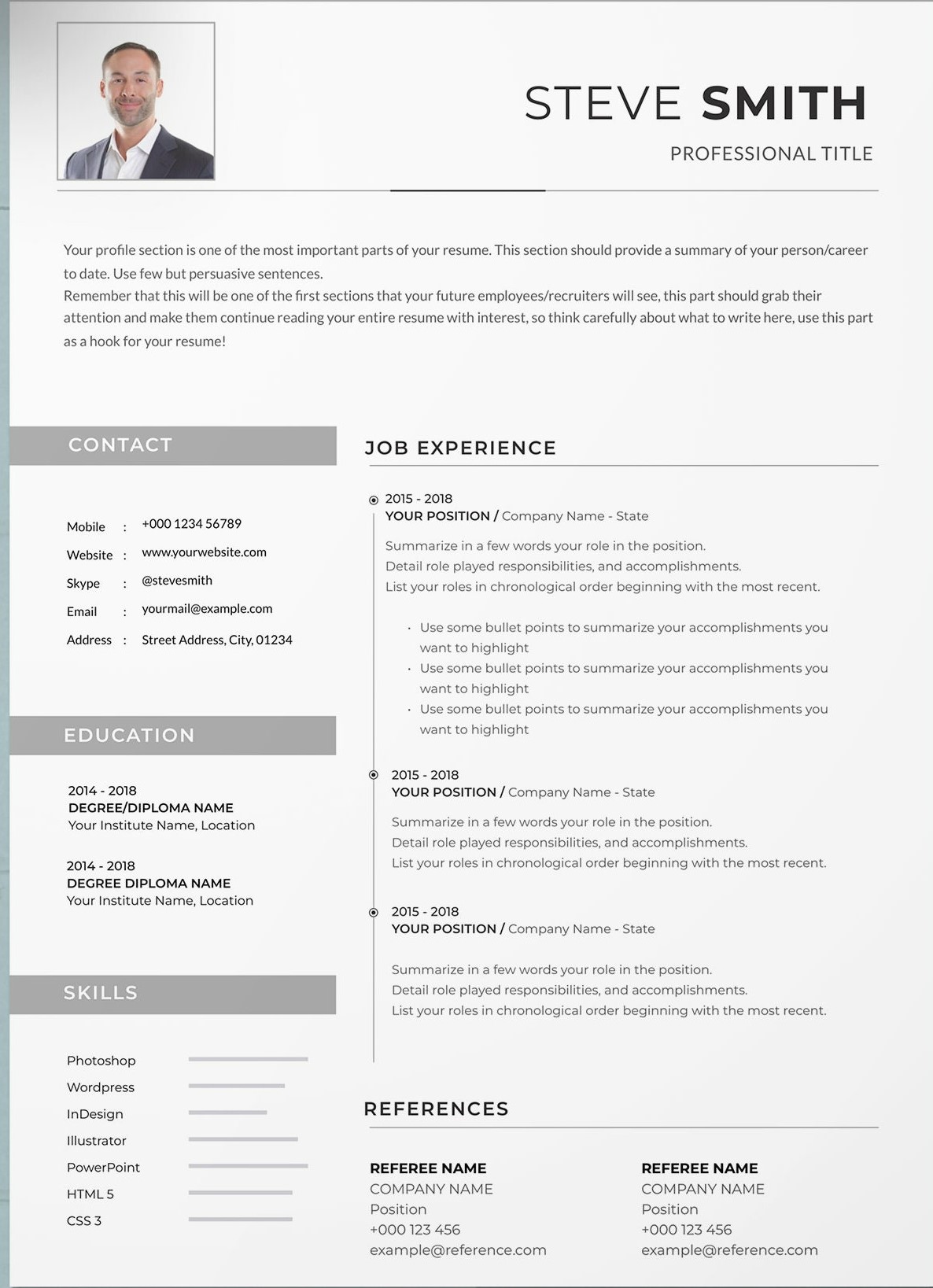Your resume isn't just a document—it's a strategic marketing tool designed to open doors to opportunities. In today's competitive job market, a generic resume that simply lists your work history is no longer sufficient to capture attention and generate interviews.
This comprehensive guide will walk you through the process of creating a resume that not only showcases your qualifications but strategically positions you as the ideal candidate for your target roles. Drawing on data from thousands of successful job searches, we'll explore what actually works in modern hiring processes.
Understanding the Modern Hiring Landscape
Before diving into resume creation, it's essential to understand how your resume will be evaluated:
The Reality of Resume Screening
- Applicant Tracking Systems (ATS): 99% of Fortune 500 companies and 75% of mid-sized companies use ATS software to screen resumes
- Initial Human Review: Recruiters spend an average of just 7.4 seconds on their initial resume screening
- Volume Challenge: Corporate job postings attract an average of 250 applications
- Screening Criteria: 70% of resumes are rejected by ATS before a human ever sees them

The typical journey of a resume through modern hiring systems
This environment creates two distinct challenges: first, your resume must be optimized for digital screening systems, and second, it must quickly capture human attention once it passes that initial filter.
Strategic Resume Foundations
A successful resume begins with strategic thinking about your positioning and content selection:
1. Define Your Target
Before writing a single word, clarify:
- Target Roles: Specific positions you're pursuing
- Target Industries: Sectors where you want to work
- Target Companies: Organizations that interest you
This targeting allows you to customize your resume to speak directly to the needs and language of your desired employers.
2. Research Requirements and Keywords
Analyze 5-10 job descriptions for your target roles to identify:
- Required Skills: Technical and soft skills consistently mentioned
- Industry Terminology: Specific language and acronyms used
- Recurring Themes: Challenges or priorities emphasized
- Qualification Patterns: Education, certifications, or experiences required
Pro Tip: The Keyword Extraction Method
Copy and paste several relevant job descriptions into a word cloud generator like WordClouds.com. The most prominent words represent the key terms that should appear in your resume. Pay special attention to technical skills, software platforms, and industry-specific terminology.
3. Identify Your Unique Value Proposition
Your value proposition answers the question: "Why should someone hire you over equally qualified candidates?" Consider:
- Distinctive Achievements: Results that differentiate you from peers
- Rare Skill Combinations: Unique blend of abilities (e.g., technical + creative)
- Specialized Knowledge: Expertise in niche areas
- Approach/Methodology: How you uniquely solve problems
This value proposition becomes the central theme that guides your entire resume.
Essential Resume Sections
Now let's explore how to craft each section of your resume for maximum impact:
1. Contact Information and Header
Your header should include:
- Full Name: Prominently displayed (18-22pt font)
- Phone Number: Professional voicemail message set up
- Email Address: Professional and simple (firstname.lastname@gmail.com)
- LinkedIn URL: Customized link (linkedin.com/in/yourname)
- Location: City and State/Province (full address not necessary)
- Optional: Portfolio URL, GitHub, or other relevant professional profiles
Before and After: Contact Section
Before:
John Smith
123 Main Street, Apt 4B, Boston, MA 02108
funnyemail123@hotmail.com | (555) 555-5555
After:
JOHN SMITH
Boston, MA | (555) 555-5555 | john.smith@gmail.com
linkedin.com/in/johnsmith | github.com/johnsmith
The improved version is cleaner, more professional, and includes relevant professional profiles.
2. Professional Summary
This 3-4 line section replaces the outdated "objective statement" and serves as your executive summary:
- Line 1: Professional identity and years of experience
- Line 2: Key areas of expertise and specialization
- Line 3: Notable achievements or unique value proposition
- Line 4 (Optional): Relevant credentials or recognition
Professional Summary Example
Marketing Operations Manager with 8+ years of experience optimizing campaign performance for SaaS companies. Expertise in marketing automation, customer journey mapping, and attribution modeling. Reduced customer acquisition costs by 32% while increasing conversion rates by 18% through data-driven optimization. Certified Marketo Expert and Salesforce Administrator.
This summary immediately establishes the candidate's experience level, technical expertise, quantifiable achievements, and relevant certifications.
3. Core Competencies / Skills
This section serves two critical purposes:
- It helps your resume pass ATS screening by including relevant keywords
- It provides a quick snapshot of your capabilities for human reviewers
Format this as a simple list of 9-12 skills, organized in 3-4 columns. Include:
- Technical Skills: Software, tools, platforms
- Methodologies: Approaches and frameworks
- Soft Skills: Communication, leadership, etc.
- Industry-Specific Skills: Specialized knowledge areas

Example of an effective skills section for a project manager
4. Professional Experience
This is the heart of your resume. For each position, include:
- Company Name and Location
- Your Title(s)
- Employment Dates (month and year)
- Brief Company Description (optional, 1 line for context)
- Accomplishment Statements (not job duties)
Crafting Powerful Accomplishment Statements
The key difference between average and outstanding resumes lies in how experiences are presented. Use the CAR formula:
- Challenge: What problem or opportunity did you face?
- Action: What specific actions did you take?
- Result: What measurable outcomes did you achieve?
Before and After: Accomplishment Statements
Before:
"Responsible for managing social media accounts and creating content."
After:
"Revitalized dormant social media presence by implementing data-driven content strategy, growing engagement by 215% and generating 40+ qualified leads monthly."
The improved version shows the challenge (dormant presence), action (implementing strategy), and results (215% growth, 40+ leads).
Pro Tip: The Metrics Matrix
Create a "metrics matrix" for your career by identifying quantifiable results in these categories: Revenue Impact, Cost Savings, Time Savings, Volume/Scale, Quality Improvement, and Customer/Client Impact. Having this matrix makes it easier to quantify your contributions for each role.
5. Education and Certifications
Include:
- Degree(s) and Major(s)
- Institution Name and Location
- Graduation Date (or expected date)
- Relevant Coursework (optional, especially for recent graduates)
- Academic Honors (if notable)
- Certifications (with dates and issuing organizations)
For experienced professionals, this section should be concise and appear after your work experience. For recent graduates, it may be more detailed and appear earlier in the resume.
6. Additional Sections (Optional)
Depending on your background and target roles, consider including:
- Projects: Significant initiatives outside of regular job duties
- Publications: Articles, research papers, or books
- Speaking Engagements: Conferences, webinars, or panels
- Professional Affiliations: Industry associations or groups
- Volunteer Work: Especially if it demonstrates relevant skills
- Languages: Include proficiency level for each
Resume Design and Formatting
How your resume looks is almost as important as what it says. Follow these principles:
ATS-Friendly Formatting
- File Format: Submit as .docx or .pdf (check job posting for preference)
- Simple Structure: Use standard section headings (Experience, Education, etc.)
- Clean Layout: Avoid text boxes, headers/footers, and complex tables
- Standard Fonts: Use Arial, Calibri, Garamond, or similar fonts (10-12pt for body text)
- Limited Graphics: Avoid images, icons, and charts that ATS can't read
Visual Hierarchy
Guide the reader's eye to the most important information:
- Consistent Headings: Use clear section headers (14-16pt, bold)
- Strategic Bolding: Highlight company names, titles, and key achievements
- Bullet Points: Use round or square bullets (avoid fancy symbols)
- White Space: Include adequate margins (0.5-1 inch) and spacing between sections
- Alignment: Left-align text for optimal readability

Example of effective visual hierarchy in resume design
Length Considerations
The appropriate length depends on your experience level:
- Early Career (0-5 years): 1 page
- Mid-Career (5-15 years): 1-2 pages
- Senior Level (15+ years): 2-3 pages
Remember that recruiters prefer concise resumes. If you're on the border between page lengths, edit ruthlessly to fit the shorter length.
Tailoring Your Resume for Specific Opportunities
One-size-fits-all resumes are rarely effective. Here's how to customize your resume for each application:
1. Analyze the Job Description
Carefully review the posting to identify:
- Primary responsibilities and requirements
- Key skills and qualifications
- Company values and culture indicators
- Industry-specific terminology
2. Prioritize Relevant Experience
Restructure your content to emphasize the most relevant aspects:
- Reorder bullet points to lead with the most relevant accomplishments
- Expand descriptions for highly relevant roles
- Condense less relevant positions
- Adjust your professional summary to align with the specific role
3. Mirror the Language
Incorporate terminology from the job description:
- Use the same terms for skills and technologies
- Adopt similar phrasing for responsibilities
- Include specific keywords from the "requirements" section
Pro Tip: The Master Resume Approach
Create a comprehensive "master resume" that includes all your experiences, accomplishments, and skills in detail. For each application, copy this document and edit it down to include only the most relevant information for that specific role. This approach saves time while ensuring you don't forget important details.
Resume Mistakes to Avoid
Even excellent content can be undermined by these common errors:
Content Mistakes
- Generic Descriptions: Listing job duties instead of accomplishments
- Missing Metrics: Failing to quantify achievements
- Irrelevant Information: Including hobbies or outdated experiences
- Unexplained Gaps: Not addressing significant time periods
- Inconsistent Tense: Mixing past and present tense inappropriately
Formatting Mistakes
- Dense Text Blocks: Paragraphs longer than 3-4 lines
- Inconsistent Formatting: Varying bullet styles, fonts, or spacing
- Poor File Naming: Using generic names like "Resume.pdf"
- Excessive Design: Overusing colors, borders, or graphics
- Contact Information Errors: Typos in email or phone number
Strategic Mistakes
- One-Size-Fits-All Approach: Using the same resume for every application
- Focusing on Responsibilities: Emphasizing what you did rather than what you achieved
- Outdated Information: Highlighting obsolete skills or technologies
- Burying Key Information: Hiding important qualifications deep in the document
- Oversharing: Including personal information (age, marital status, etc.)
Resume Review and Optimization
Before submitting your resume, use this quality control process:
1. Content Review
Ask yourself:
- Does my resume clearly communicate my value proposition?
- Have I quantified my achievements with specific metrics?
- Is every word contributing to my candidacy for this specific role?
- Have I included relevant keywords from the job description?
- Does my experience demonstrate progression and growth?
2. Technical Review
Check for:
- Spelling and grammar errors (use tools like Grammarly)
- Consistent formatting (spacing, bullets, font sizes)
- Proper verb tense (past tense for previous roles, present for current)
- Accurate contact information
- ATS compatibility (run through a tool like JobScan)
3. External Feedback
Seek input from:
- Industry peers who understand the role requirements
- Hiring managers in your target field
- Career coaches or resume professionals
- Trusted mentors who will give honest feedback
Resume Review Checklist
Before submitting, confirm your resume:
- ✓ Clearly communicates your unique value proposition
- ✓ Contains relevant keywords from the job description
- ✓ Quantifies achievements with specific metrics
- ✓ Presents information in reverse chronological order
- ✓ Uses consistent formatting throughout
- ✓ Has been proofread for errors
- ✓ Is saved with a professional file name (FirstName_LastName_Resume.pdf)
- ✓ Passes an ATS compatibility check
- ✓ Has received feedback from at least one industry professional
Beyond the Resume: Creating a Cohesive Application Package
Your resume works best as part of an integrated application strategy:
1. Aligned LinkedIn Profile
Ensure your LinkedIn profile complements your resume:
- Consistent work history and accomplishments
- More detailed "About" section that showcases your personality
- Recommendations that validate your resume claims
- Activity that demonstrates industry engagement
2. Customized Cover Letter
Use your cover letter to:
- Explain why you're interested in this specific role and company
- Address potential concerns (career changes, relocations, gaps)
- Highlight 2-3 specific achievements most relevant to the position
- Demonstrate cultural fit and alignment with company values
3. Portfolio or Work Samples
For many roles, supporting materials strengthen your application:
- Digital portfolio of projects and outcomes
- Writing samples or presentations
- Code repositories or design examples
- Case studies of problems you've solved
Conclusion: Your Resume as a Living Document
The most effective resumes evolve continuously throughout your career. Adopt these ongoing practices:
- Achievement Tracking: Document new accomplishments as they happen
- Regular Updates: Refresh your resume quarterly, even when not job searching
- Skill Development: Identify and address gaps between your resume and target roles
- Feedback Integration: Continuously refine based on interview results and feedback
Remember that your resume is not just a historical document—it's a strategic marketing tool that should evolve as your career and the job market change. By applying the principles in this guide, you'll create a resume that not only passes through digital screening systems but also compellingly presents your unique value to potential employers.
The time invested in crafting an exceptional resume pays dividends throughout your career, opening doors to opportunities that might otherwise remain closed.







